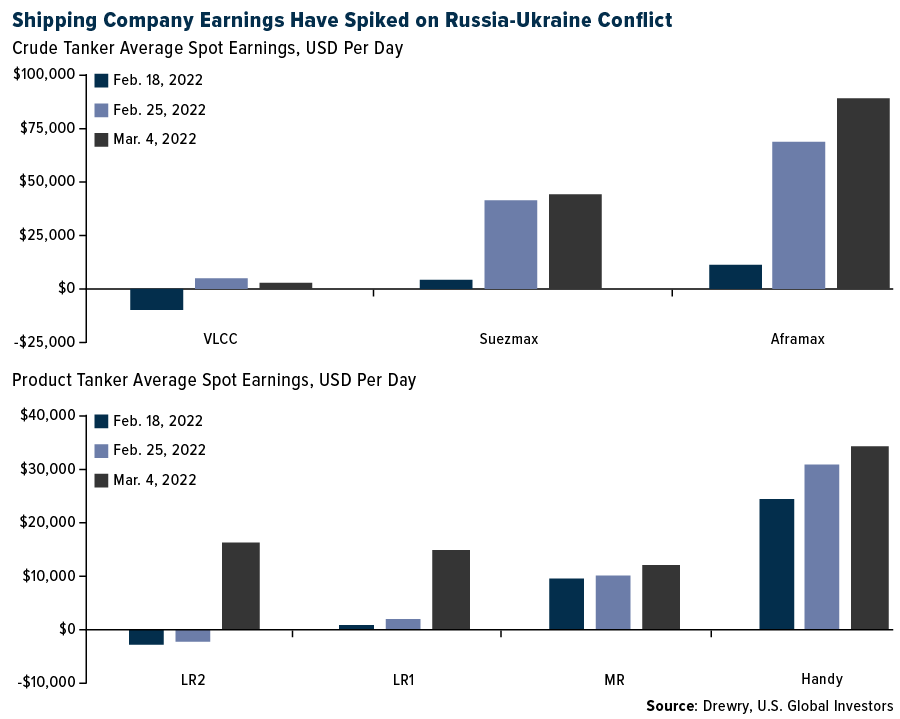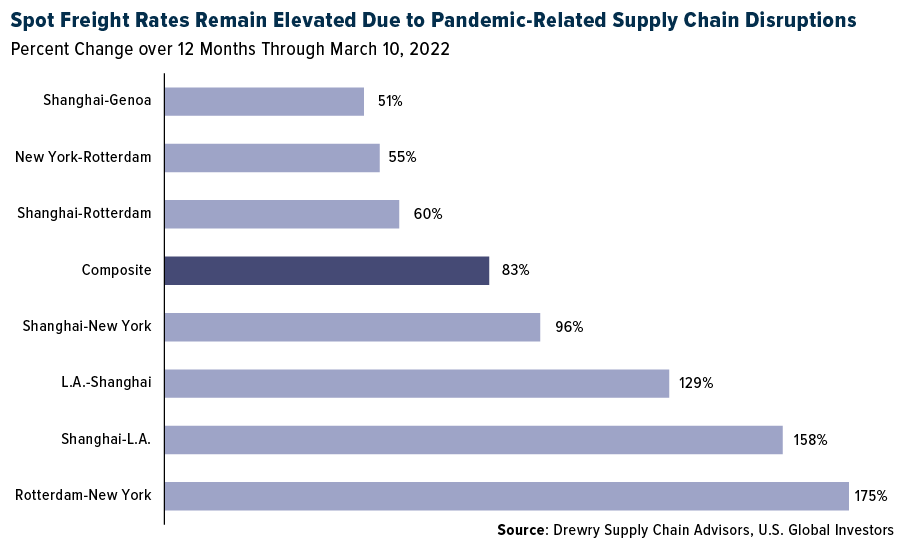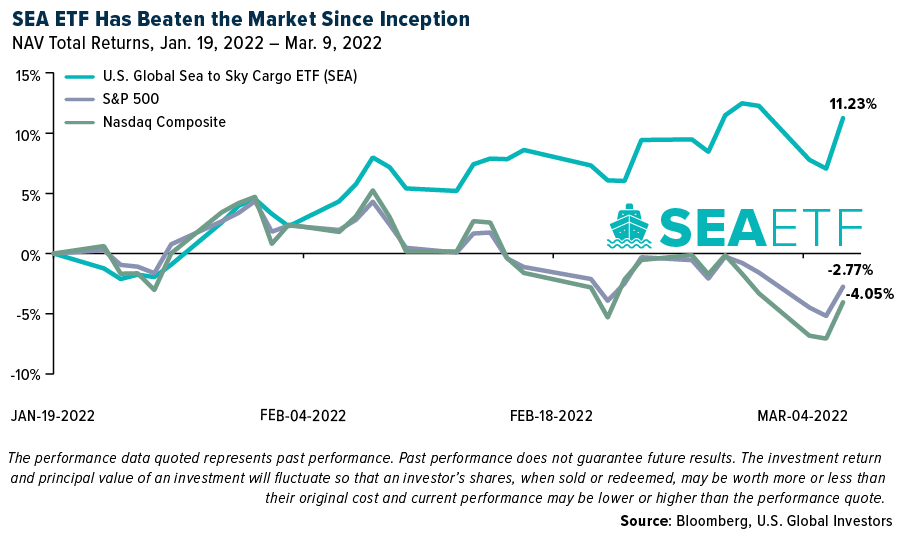A new report by Drewry shows that daily average earnings for a specialized sector of the shipping industry have spiked since Russia’s invasion of Ukraine.
In a report dated March 9, analysts at the maritime research firm write that spot earnings for crude tankers and product tankers, which carry gasoline and other refined petroleum products, have increased due to a vessel shortage as traders rushed to lock in carriers and operators were unwilling to sail into the Black Sea region, which borders Ukraine. Earnings for smaller-class vessels—which, unlike very large crude carriers (VLCCs), can access canals and ports of all sizes—have seen the biggest jumps from February 18, before the start of the conflict, to March 4.

Remember, shipping freight rates are already highly elevated due to the pandemic-related supply chain imbalances. Spot prices are up 83% on average from the same week last year, according to Drewry. Shipping a container from Shanghai to Los Angeles costs exporters 158% more than it did a year ago; the Rotterdam-New York route is as much as 175% more expensive.

Investors have taken notice. Compared to the broader market, which has fallen into correction or even bear territory since the start of the conflict, shares of many shipping and logistics companies have popped.
Among the biggest movers in the U.S. Global Sea to Sky Cargo Index (SEAX) between February 24 and March 10 were Japanese carriers including Mitsui O.S.K. Lines (up 26.7%), Kawasaki Kisen Kaisha (up 20.9%) and Nippon Yusen Kabushiki Kaisha (up 20.0%). Taiwan’s Evergreen Marine (up 10.3%) and Yang Ming Marine Transport (up 10.2%) have also jumped.
SEA Has Shown Great Resilience
The U.S. Global Sea to Sky Cargo ETF (SEA),which may invest in not just tanker companies but also container shipping and logistics companies, has likewise done well since it set sail earlier this year. From January 19 through March 9, the smart-beta ETF was up more than 11%, compared to losses for the S&P 500 and Nasdaq Composite.

SEA provides investors diversified access to the global sea shipping and air freight industries. SEA seeks to track the performance, before fees and expenses, of SEAX. The Index uses a smart beta 2.0 strategy to help determine the most efficient marine shipping, air freight and courier, and port and harbor companies in the world.
We’re pleased to see how resilient these companies have been in the face of incredible geopolitical risk and soaring fuel costs. Discover SEA for yourself by clicking here!
Past performance does not guarantee future results.
All opinions expressed and data provided are subject to change without notice. Some of these opinions may not be appropriate to every investor.
